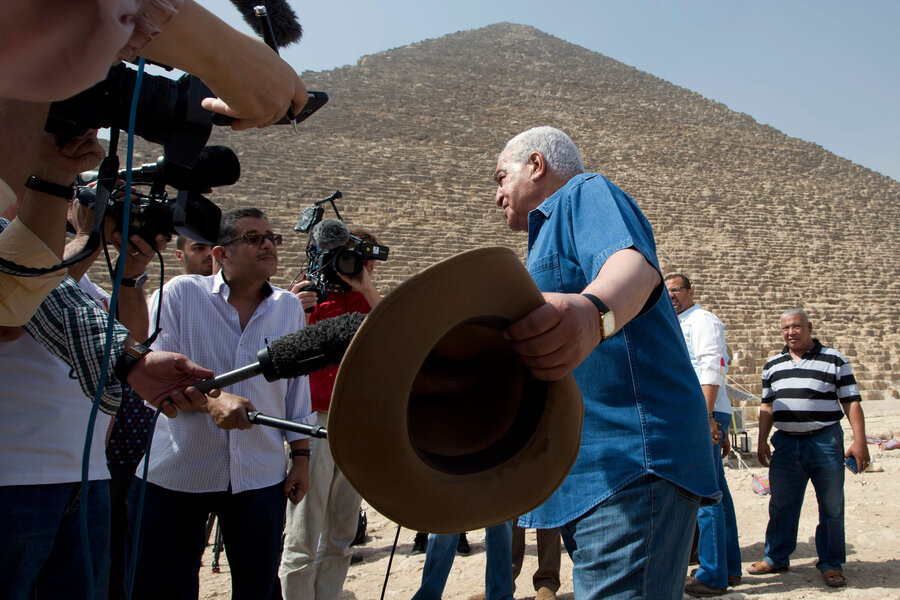Peering at Great Pyramid: How high-tech scanners change archaeology
Loading...
The pyramids are one of mankind's most visible architectural achievements, and now archaeologists with particle scanners are searching for secret chambers that have long remained invisible.
New technology is transforming modern archaeology, enabling researchers to make new discoveries in less invasive ways and putting those discoveries in better context.
"I think it’s changing our perspective because it gives us this landscape perspective," says Douglas Comer, an archaeologist who specializes in satellite technology and serves as president of ICOMOS International Scientific Committee on Archaeological Heritage Management.
"I think it makes what archaeologists do and find ... much more relevant to issues that we’re struggling with today."
The latest technology probing Egypt's pyramids is a muon particle scanner, a special telescope developed by French scientists to search for hidden stone chambers.
Researchers tested the new technology in April, when the muon particles correctly revealed a hidden chamber in the Bent Pyramid, according to a release from the project.
Muons are particles created from cosmic ray collisions in the atmosphere, and a muon particle scan enables scientists to trace the structure of a building non-invasively, similar to how airport scanners reveal the contents of your luggage.
King Tut's tomb was the first site to be explored as part of the project "Scan the Pyramids," an archaeological partnership between Egypt's Ministry of Antiquities, Cairo University, and the HIP Institute, a French institute using technology to study and preserve cultural heritage.
Engineers employed infrared scans to search for temperature differences that might reveal chambers hidden between tomb walls.
The impact of new technology on archaeology extends far beyond Egypt. The archaeological world was taken by surprise in April, when space archaeologist Sarah Parcak used satellite images to locate a possible new Viking settlement in North America, The Christian Science Monitor's Corey Fedde reported.
Archaeologists in Honduras used a different new technology – airborne laser scanners called LIDAR – to probe an old site for new clues. They uncovered a rare non-Mayan city they hope is connected to the ancient legend of the "City of the Monkey God," wrote Lisa Suhay for The Monitor.
“With LIDAR, this site which scientists have been all over since the 1980s, all of a sudden they saw things they hadn’t seen before,” Ben Thomas, director of programs at the Archaeological Institute of America told the Monitor. “That’s the fun part of archeology. It’s never over.”
New technology can not only show archaeologists new patterns at well-explored sites, as they hope to do in Giza, but also expand their appreciation for patterns across multiple sites, Dr. Comer says. His use of satellite technology has helped reveal a pattern of how many different civilizations ultimately collapsed after over-exploiting their resources.
One example is in Cambodia, where researchers employed LIDAR to create a map of the vegetation-covered, long-lost city of Mahendraparvat. They found a network of highways and undiscovered temples from a civilization destroyed by its own deforestation and broken canal system, the Associated Press reported.
"This kind of technology pretty much forces the person doing this research to take what they call a synoptic view, you’re looking at the big picture," Comer tells the Monitor. "You wouldn’t see it if you were just practicing archaeology in the old way, which is just to do fieldwork and record findings and take the artifacts back to a museum."








